I’ve never been all that fussed about how a guitar looks. Over time that’s changed somewhat as I began to understand how having a guitar you like looking at actually inspires you to pick it up and play.
But generally I care a lot less about the appearance of a guitar when compared to something like how it plays. So for a long time whenever I saw the word “binding” in relation to a guitar I pretty much ignored it.
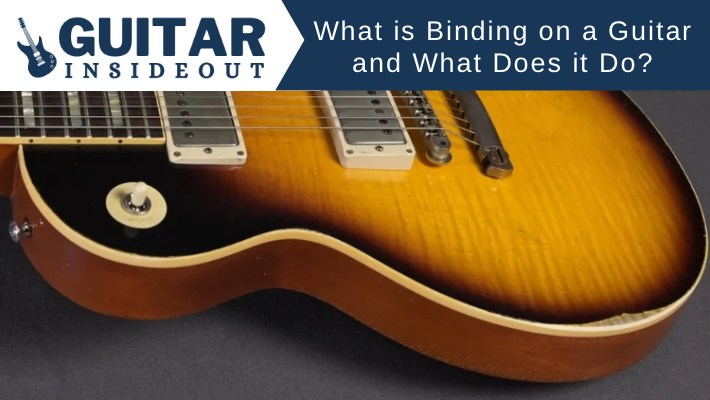
It took me ages to actually find out what binding was. As it turns out it’s very straightforward: binding on a guitar is the decorative strip of material that runs along the edges of the guitar body, neck and in some cases the headstock. It’s main purpose is aesthetic and to enhance the appearance of the guitar.
If you’re interested in knowing more about binding, what it does, why it’s important and more then keep reading.
What is Binding on a Guitar
Binding on a guitar is just the decorative strips of material that go around the edges of the guitar body, neck or fretboard. Both acoustic and electric guitars can have binding and it is quite often used together with inlays and other decorative parts to make the guitar look more appealing.
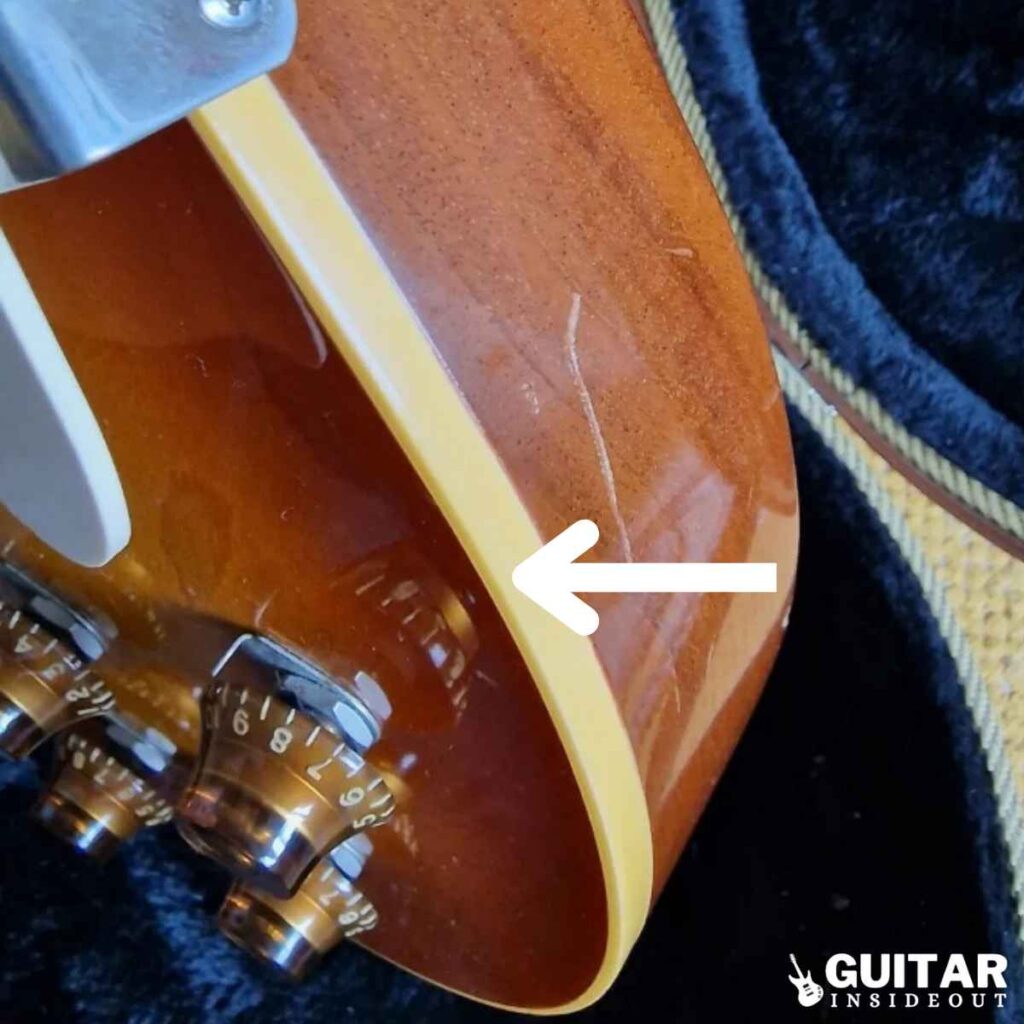
Binding is often an indicator of a higher end guitar. Gibson Les Paul’s are probably the most famous guitars with binding and you actually pay extra to get the binding included.
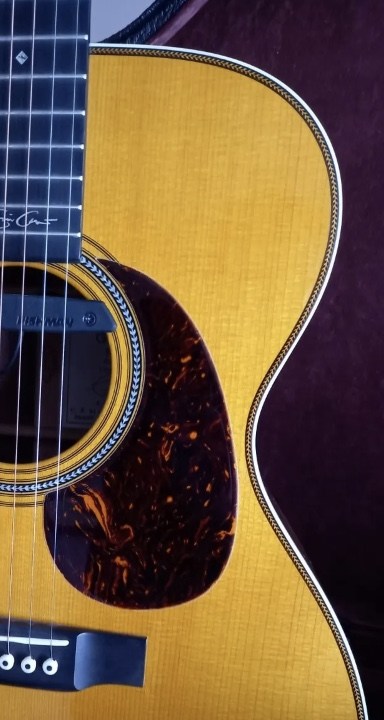
For example a Les Paul Standard comes with binding (amongst other things) but a Les Paul Studio doesn’t. The Standard costs a fair bit more though.
It’s not the only thing that puts the price of the Standard up but it’s definitely one of the reasons it costs more. This is because the process of applying binding is specialist and time consuming.
Basically is costs the guitar maker more money and so you have to pay for that. So in a lot of cases guitars with proper binding will be more expensive.
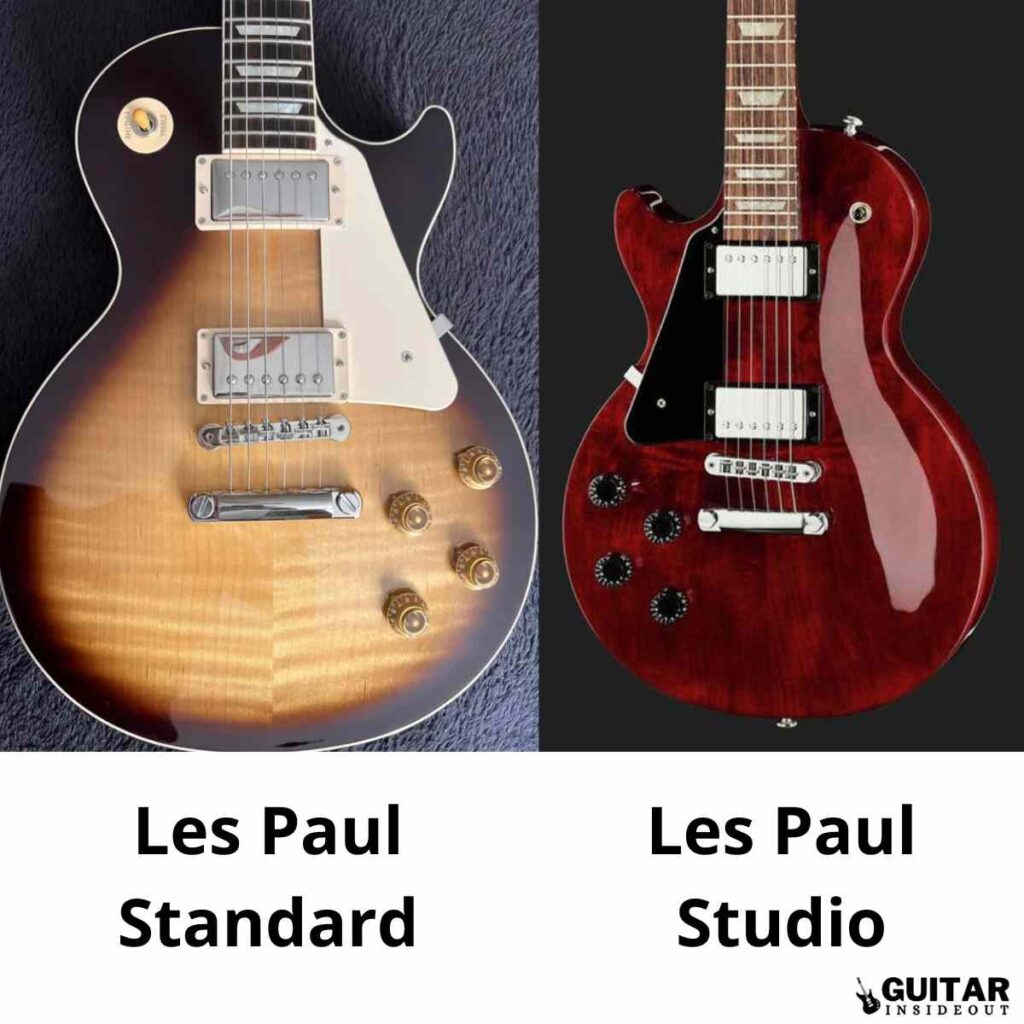
As binding usually looks good lots of lower end or cheaper guitars will have fake binding that’s painted on. I remember my first acoustic guitar, a Washburn, had painted binding that looked awful!
What Does Binding Do?
It’s main function is to make the guitar look good. That’s really what it’s best known for.
It adds a contrast to the instrument and helps to make it stand out. By having the binding around the outside of the body or neck, usually made from a different material and in a different color, it draws the eye in the way a guitar without binding might not.
On an electric guitar binding is mostly visual but also provides some protection from damage. On acoustic guitars it does a bit more, especially when it’s the body of the guitar that is bound.
Binding on the fretboard/neck is almost entirely cosmetic whereas binding on the body also helps in other ways:
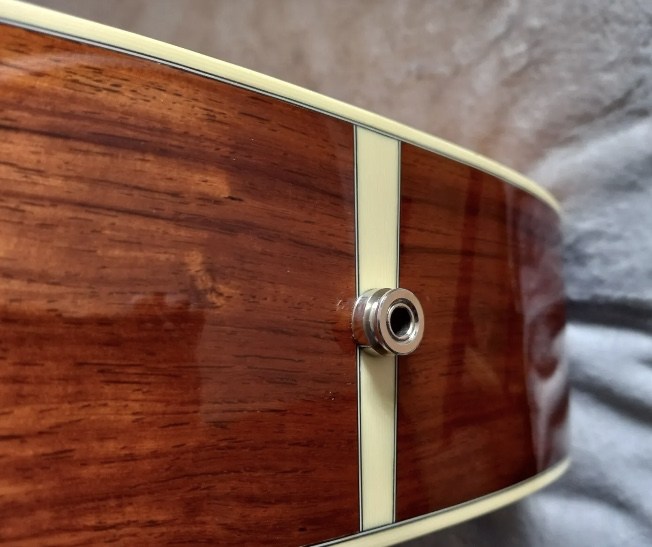
Protection
Binding can help protect the edges of the guitar from getting damaged or worn. If you bang the edge of a guitar with binding against something then it has a better chance of avoiding a ding.
The wood or abalone bindings look better I think but it’s actually plastic binding that provides the best protection. You end up with fewer chips and dents with any binding but even more so with plastic.
Also, due to the way they are made, acoustic guitars have their sides glued to the tops and sides. Binding along that join can help to reinforce it and create a seal from humidity and moisture that the end grain of the wood can be susceptible to.
Comfort
Bound fretboards are generally smoother and so arguably more comfortable to play. Having sharp frets can cause nasty cuts when you’re playing.
So a nice, smooth and rounded binding on the top of the neck can be very effective at making it feel more comfortable to play.
You may find that bound fretboards also shrink less during high humidity which can result in fewer protruding frets.
It’s a minor detail and not going to make a huge difference, but binding on a guitar should generally make it smoother and in turn potentially more comfortable.
Tone
This is very subjective but some people believe that the materials used for binding have an impact on the tone of the guitar. Some materials can affect how resonant the guitar is and in acoustic guitars the binding can influence how the sound is projected.
I can’t say I’m convinced about this. Sure, there might be a tiny difference depending on the binding or material used. But as is often the case with these claims no normal person would ever be able to notice it.
What is Binding Made From
Binding tends to be made from either plastic, abalone, celluloid or wood.
Plastic is the cheapest and this is usually reflected in how it looks. It doesn’t have the visual appeal of wood or abalone.
But it is easier to work with and because of its price you will find plastic binding on cheaper and lower end guitars.
Wood is popular because it looks good but costs a lot more and can be tricky to work with. The natural look you get from wood binding is considered to be the best looking but you will have to pay extra for it.
Celluloid gives a more vintage look as it was the most common binding in the past. But it’s also difficult to work with.
Types of Binding
There are a few different types of binding:
- Single-ply binding – a single layer of material that is applied to the edges of the guitar
- Multi-ply binding – two or more layers of material that are stacked on top of each other to create a more intricate design
- B/W/B binding – black and white layers of binding that are stacked on top of each other to create a classic look
- Ivoroid binding – a type of plastic binding that is designed to mimic the look of ivory
The type of binding that is used on a guitar can have a major effect on its appearance and value. Some high-end guitars feature intricate binding designs that are handcrafted by skilled artisans and so the value (and price) of these guitars is much higher. Others may use more basic binding materials and techniques to keep costs down and not make the guitar too expensive.
How is Binding Applied to a Guitar?
If a Luthier is doing it by hand then applying binding to a guitar is a delicate process and requires a huge amount to attention to detail to get right.
Typically, binding is applied to the edges of the body and the fingerboard of the guitar. To do this the luthier will use a binding machine or a handheld router to cut a channel into the edge of the guitar body or fingerboard.
Once the channel has been cut the binding material is carefully inserted into the channel and then glued into place. A scraper is then used to remove any excess binding material and smooth out the edges.
This process is repeated until all the edges of the guitar body and fingerboard have been bound.
But there are machines that can do much of this process now. This makes it a lot quicker, easier and cheaper, with any hand finished touches coming at the end.
FAQ
Does Binding Offer Any Structural Help?
In electric guitars – not really. In acoustic guitars if the binding is thicker than the sides then the join may receive some extra strength. Plastic bindings don’t really help with the structure at all but are a little better at helping to protect the guitar from damage.
Is Binding Necessary?
No, lots of guitars are made without binding. Doing so saves time when making the guitar and keeps the cost down.
Neck binding with nibs will help the edge of the fretboard feel consistent through temperature changes.
The fretboard on an unbound neck tends to shrink due to lack of humidity which can make the fret edges sharp and it gets difficult to play.
On the other hand, if you get the binding, the nibs replace that very last bit of fret that has been poking out, making it less of an issue.
Awesome knowledge Ross – thanks!